When researching types of illustrations for children’s books, keep this in mind:
- Which age group your children’s book is for
- Types and styles of illustration suited for the age group or book style
- How many illustrations you’ll have in your book and which type of illustrations (full page, half page etc.)
Let’s get right into answering your big question… What are the types of illustrations for children’s books and which one is right for your book?
All of the above points will help you answer that, and I’ll explain each one in more detail.
What makes a great children’s book illustration? The most successful children’s illustrations of all time differ widely, but also have similarities that make them great.
The illustrations for Where the Wild Things Are, Goodnight Moon, Dr Seuss books, I Wish You More, Tuesday and I Want My Hat Back are all different but still amazing in their own ways.
Understanding that can help you get great illustrations too. But more on that later.
To plan for your book illustrations, it’s a good idea to start with style.
Ideas for the style of your children’s book illustrations
The first thing is your idea of how the illustrations should look. Cartoony? Bold and bright? A bit scary? Whacky? Beautiful and delicate?
Your illustrations should complement your style of writing and the message of your children’s book. Sweet watercolour illustrations, for instance, can be a great match for a gentle, touching story. But they may not work well for a monster truck book!
Different styles could suit your story, though, so don’t feel limited. And most styles can be adapted to match the quality of your book. For instance, the same style of cartoon can be funny, goofy, cute, or even shocking, depending on a few slight variations.
It’s a great idea to study some of the best children’s book illustrations out there to get an idea of what you’d like for your book. There are many places you can do this, including your local library.
Tip: Study fairly recent books, as the children’s book industry has changed. Books from 30 years ago don’t match what is selling now. Study books published in the last 10-15 years.
Here are two pages where you can see some beautiful examples:
https://graphicmama.com/blog/children-book-illustrations-examples-for-inspiration/
https://www.nytimes.com/2019/11/01/books/review/best-illustrated-childrens-books-2019.html
Which age group is your book for?
Also keep in mind the age group that your book is for. And, just in case you don’t have a clear age group in mind, I have to mention it’s crucial. Children grow rapidly in their ability to understand and sense of humour, and what they enjoy changes. A book for a 1-year-old, 4-year-old, and a 10-year-old are all different.
Even though the story, word count and book types vary from age to age, most illustration styles can work for any age group.
Your options are many. The main things to keep in mind are if a kid in your age group will like and understand the drawings. Too abstract won’t work for toddlers. Too baby-ish may put off older kids.
The biggest tip here is: Look at other books for your age group to see what is selling.
What are the types of illustrations for children’s books?
You also need to decide what type of illustrations you want in your book. This will affect the overall look and feel of the book, but also how many illustrations you need. What I’m referring to here is the”size” of the illustrations.
There are four types of illustrations for children’s books:
- Spot illustration
- Half-page illustration
- Single (full) page illustration
- Spread illustration
So, what are they?
Spot illustrations 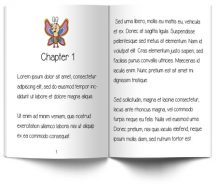
These are small, simple illustrations to liven up a page with text. They’re usually a quarter of a page or less with little or no background. Spot illustrations can be placed as a chapter heading, corner decoration, or next to or within a body of text. They are often black and white or done in a sketchy style.
Half-page illustrations 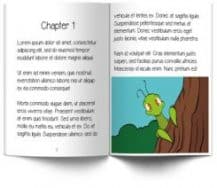
As the name says, this is an illustration that fills half a page. While it can be detailed, due to its smaller size, the background will be less detailed than a full page illustration.
Single (full) page illustrations 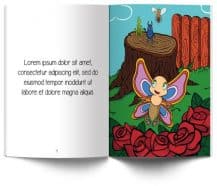
This is an illustration that fills one whole page. Here we can pull out all the stops and include lots of detail, since it fills a whole page. You can also have the illustrator leave space for your text if needed.
Spread illustrations 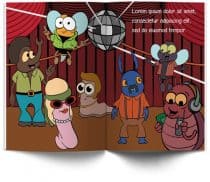
Spread across two full pages, normally with text on the illustration. While a mix of different illustration sizes makes a beautiful book, going all out and making your whole book double-page spreads will make it amazing!
If you are doing a picture book and budget allows, go for spread illustrations for your whole book. If not, take as many spreads and single page illustrations as you can.
You can also make your book interesting by mixing up the different types of illustrations throughout. Your illustrator should be able to help you work out a layout that can work well.
How many illustrations should a children’s book have?
Another important point to consider is how many illustrations the book will have. This comes down to page count and which type of book it is. For instance, a picture book has way more illustrations than a middle grade novel.
Work out how many pages the book will be. 24 or 32 pages are common for picture books.
It’s important to understand, though, that in a 32 page book only about 28-30 pages are for the story. Sometimes even less, as some printers glue the first and last page onto the front and back covers.
Here’s an example of a common book layout to give you a better idea:
You’ll see you have 14 spreads and two single pages for the story and illustrations.
NOTE: The minimum page count for print with KDP is 24 pages. With many print platforms the page count will go up in increments of 4. In other words, if your book is 26 pages, they will add two blank pages at the end. Check this before printing.
Look at books for your age range to see how many words tend to go on a page and per picture.
Picture books normally have full page or spread illustrations on every spread.
Early readers can have somewhat less or smaller illustrations, but mostly they also have illustrations on each spread. These can be spread, full or half-page illustrations.
First chapter books vary from having illustrations on each page to only one illustration per chapter. They contain everything from spot through single page illustrations (and sometimes spread illustrations).
What should you not do when illustrating a children’s book?
There are some definite “don’ts” for children’s book illustrations. Knowing these can help you get the best illustrations for your book. Some things come down to taste or opinion, but other things are widely agreed upon. Those are the ones I’ll cover here.
Avoid this when getting illustrations for your children’s book:
- Don’t compromise on having the best possible illustrations for your children’s book.
- If you’re not an illustrator, don’t illustrate your own books.
- Don’t hire an illustrator without a proven track record and great reviews/testimonials. At the very least, chat with them enough to REALLY get a feel of how they are. Make sure they’ll deliver good work, on time.
- Don’t work with an illustrator who has no experience with children’s books. You get some wonderful illustrators, but if they have no book illustration experience, they won’t know the requirements. This can lead to wrong file sizes, format, and many other problems! So only work with them if you know all the exact requirements for your ebook and print and you’re willing to guide them closely.
- Don’t use the same angle, distance (close-up, medium or wide view), poses etc. in all your illustrations. Make sure they are varied.
- This is more about your writing, but make sure the illustrations don’t repeat the text. Avoid putting descriptions in the text (e.g. “red bike”, “blue shirt”, “black hair”), because the illustrations will show these things. They need not be in the text. So if it’s not critical to the story, leave it out. If it’s critical, make sure the illustrator knows to draw a red bike and not a green one.
- Following from the last point, make sure the illustrations match the text. If you’ve read a lot of illustrated books, I’m sure you’ve seen examples where this is not the case. It’s annoying to read, “The kids were playing outside”, but the illustration shows them indoors.
- Don’t try to show too much in the illustrations. They should add to the story, but if the illustrations need to show too much, it will become confusing, messy or be lost on the reader or child.
- Don’t be too conceptual or abstract… especially for younger children. I can vouch for this as my almost 4-year-old has repeatedly asked me things like, “Why is there a red light around her?” Kids, especially young kids, don’t understand a lot of the concepts we’ve learnt as adults. Be aware of that.
- Don’t micromanage your illustrator. They are a pro (or should be!) and can greatly enhance your book… if you let them! Don’t tell them in detail what to draw (unless a certain setting or action or specific objects, colors, races etc. are essential to the story or text).
The last don’t needs more explanation. Give the illustrator the manuscript (if it’s short) or brief art notes—and then let them do their thing! They may surprise you with how much better they make your book with their creativity.
What is an art note? It’s a very brief note saying what needs to be illustrated.
For instance:
- “Billy is walking in the forest.”
- “The girl and boy are swimming at the beach.”
In case you’re wondering how not to do it, here are the above two examples with too much direction:
- Billy, wearing a blue shirt and brown pants and sneakers, is walking in a pine forest with some rocks and bushes. We see him from the back, from the waist up. There is a path, but mostly dense trees.
- The girls and boy are swimming at the beach. She is wearing a red and white striped swimsuit. There are a few clouds, seagulls and a few people and umbrellas.
If it must be a pine forest because that’s important to the story, let the illustrator know. If it doesn’t matter, just leave it up to the illustrator.
Plus, if they do sketches first (which they should), you’ll have a chance to give feedback and ensure the illustrations turn out to your liking.
There are exceptions to this rule. For example, nonfiction needs accurate illustrations most of the time. You may need to give exact descriptions and even reference images. Or the book may be for your child or grandchild and you want the main character to resemble them. That’s okay! Send a photo, by all means.
The bottom line is, for all details that are unimportant, don’t stifle the illustrator’s creativity by insisting on them.
Children’s book illustration styles
Style is quite a broad term. It can refer to cartoon-style or realistic, whimsical, stylized, watercolor, charcoal, etc.
Or it can relate to an individual artist’s drawing or painting style, or “hand”. Of course, choose an illustrator with an individual style that appeals to you.
I won’t discuss individual’s styles here (since they’re as varied as there are illustrators in the world!) I’ll just go over general styles you could choose for your book illustrations.
Before we get into all the different styles, please also note that there are two major divisions in illustrations. These are traditional vs. digital.
- Traditional illustrations, in brief, are paint, pencil, charcoal, pen, any medium–on paper.
- Digital illustrations are made on the computer.
Illustrators can combine these two, and they often do. Digital illustrations have become more and more common for children’s book illustrations.
One isn’t better than the other. Both have advantages and disadvantages, but in the end it comes down to a matter of taste (and budget—traditional art is often more expensive). It’s also good to note that digital has developed to a point where it can closely imitate all forms of traditional art.
Let’s go through the major styles of children’s book illustrations.
To keep things simple, I’ll divide style into two parts:
- The genre or drawing style of the illustrations
- The medium used to create the illustrations
It’s also important to understand I’ll be sharing one or a few examples of each, but in each case there are many more variations that will give you a different feel and look. I can’t share all the possibilities in one article, so I’ve chosen only a few. If you want to see more of a certain drawing style or medium, Google is your friend 🙂
#1 Genre or drawing style
For children’s books, drawing styles include the following:
- Cartoon–cute or childlike
- Cartoon–whacky or funny
- Realistic
- Whimsical
- Line drawings
- Sketchy drawings
- Stylized
Looking at the examples below, you ‘ll see styles overlap. All the styles from number 4 to 7 are also either cartoon or realistic. Whimsical drawings can also be stylized, and so on.
Cartoon—cute or childlike
Cartoon style drawings have exaggerated features and are not true to life. The style can vary and some of the other drawing style categories listed above are subdivisions of “cartoon”. I divided cartoons into two main styles, the first being cute or childlike. This is the style you see for many children’s books, especially younger kids.
Examples:
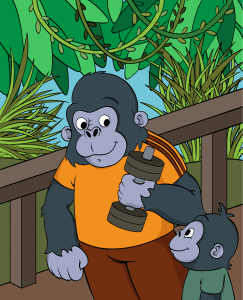

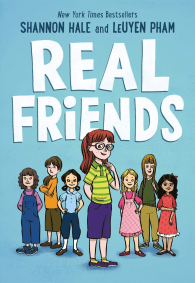
Copyright: Marti Whiting-Pearson Copyright: Mo Willems Illustration Copyright: LeUyen Pham
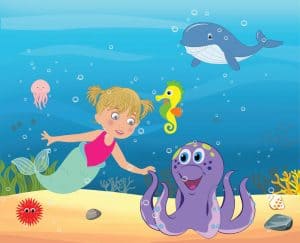
Copyright: Total Language Connections
Cartoon—whacky or funny
Because of the exaggeration in the drawings, cartoon lends itself perfectly to funny or whacky illustrations.
Examples:
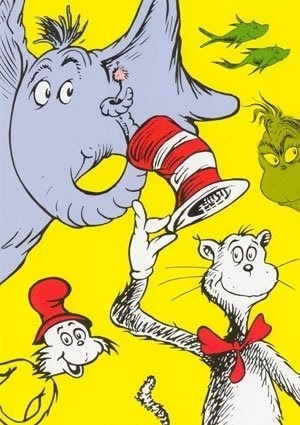
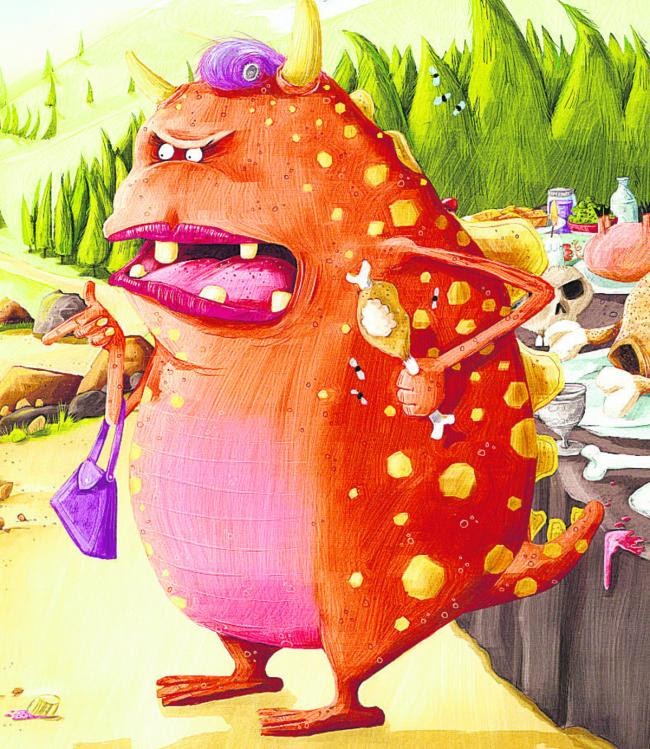

Copyright: Dr. Seuss Enterprises Illustration Copyright: Lee Wildish Copyright: Tedd Arnold
From Spaghetti with the Yeti
Realistic
Children’s books are almost never hyper-realistic. “Realistic” here refers to fairly true to life proportions, versus cartoon style that is not true to life. In children’s books realistic illustrations can be simplistic, or detailed.
Examples:
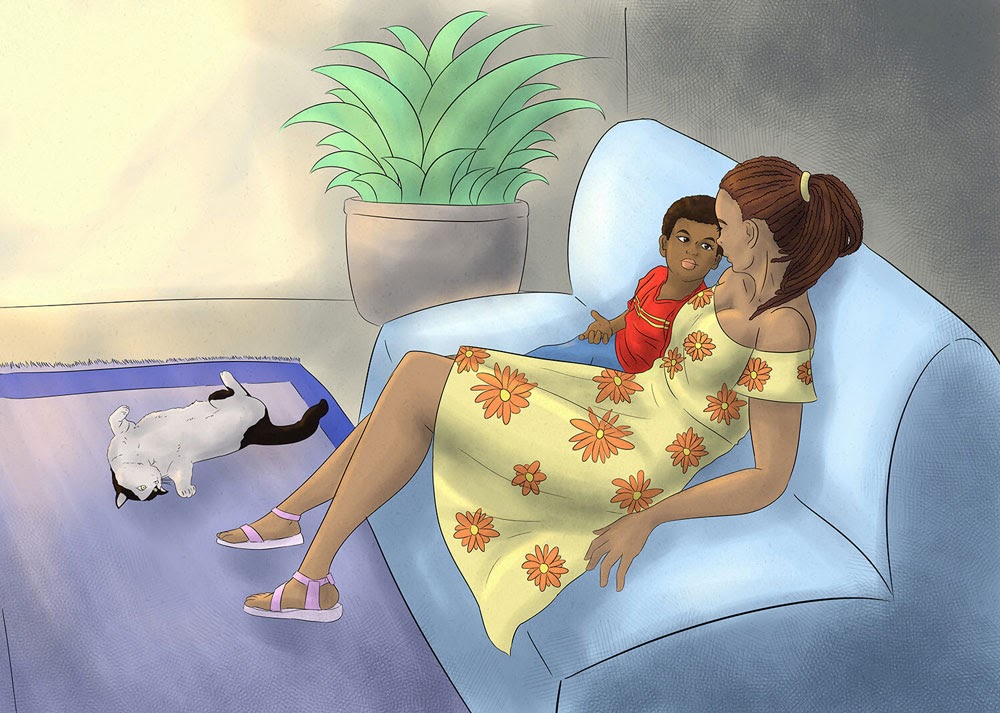
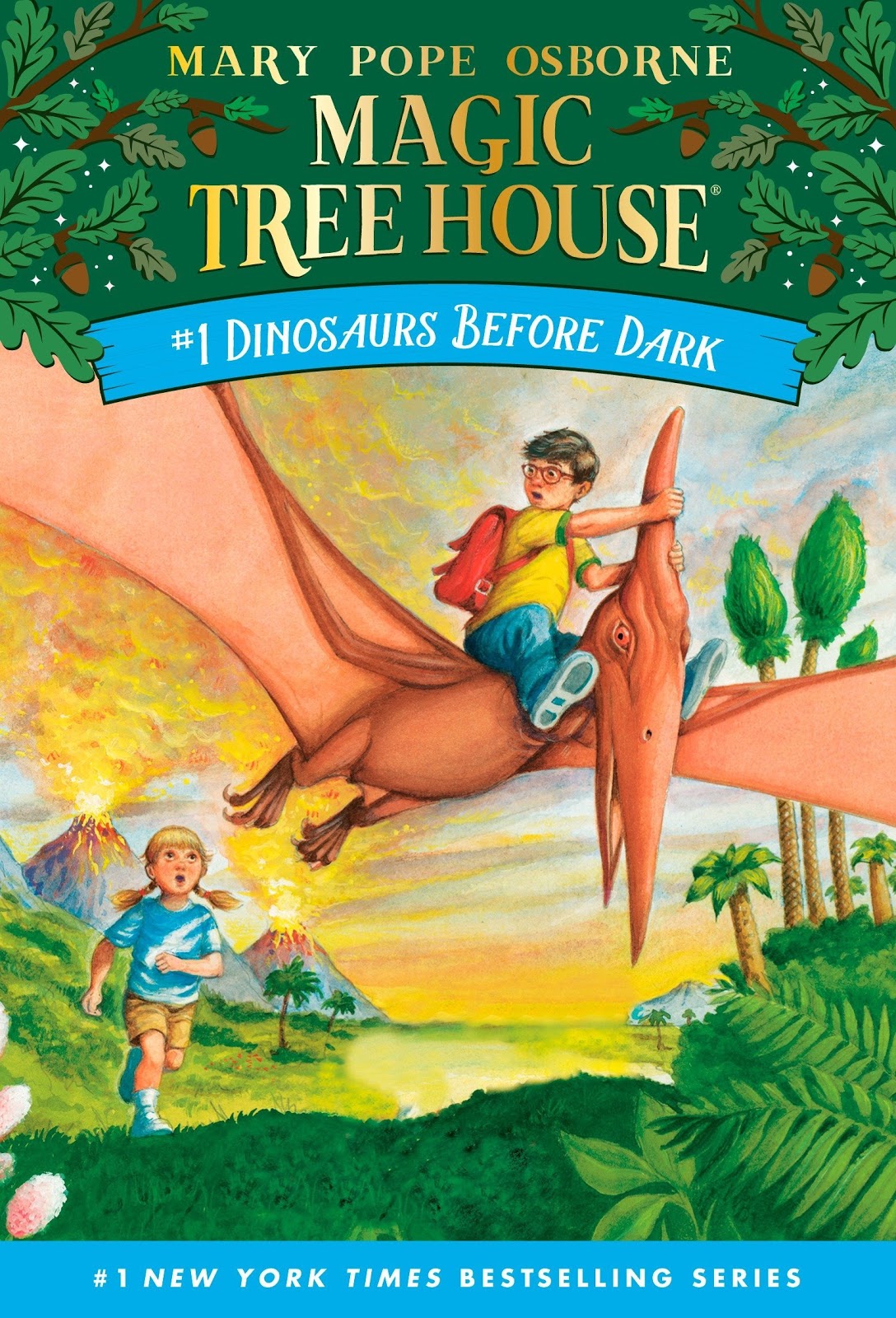
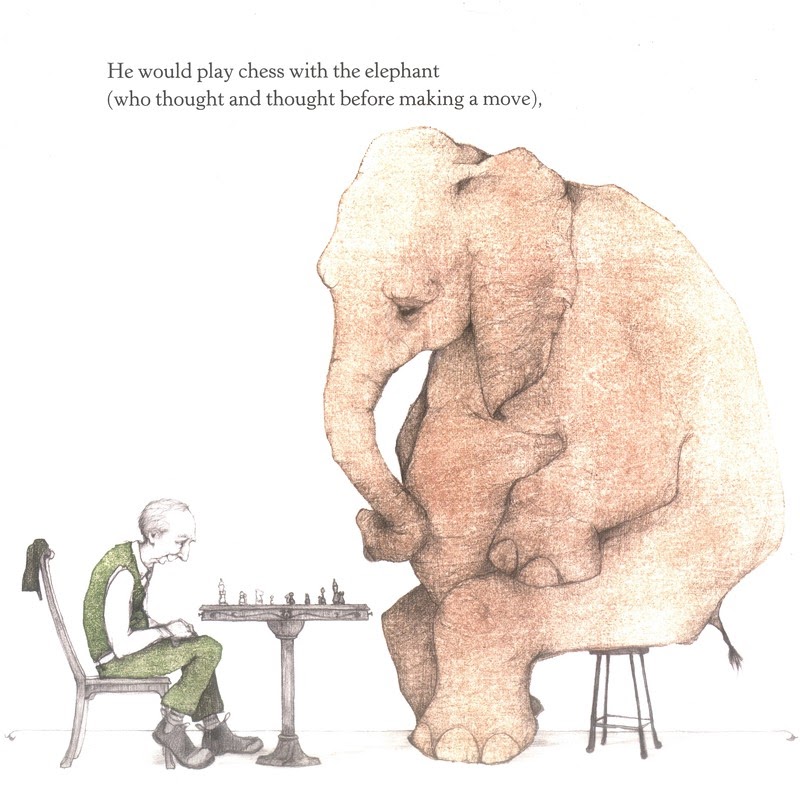 Illustration Copyright: MacMillan Education SA Illustrations Copyright: Illustration Copyright: Erin E. Stead Illustration by GetYourBookIllustrations Sal Murdocca From A Sick Day for Amos McGee
Illustration Copyright: MacMillan Education SA Illustrations Copyright: Illustration Copyright: Erin E. Stead Illustration by GetYourBookIllustrations Sal Murdocca From A Sick Day for Amos McGee
Whimsical
Whimsical illustrations are charming, childlike, carefree, dreamy, fun and colorful.
Examples:
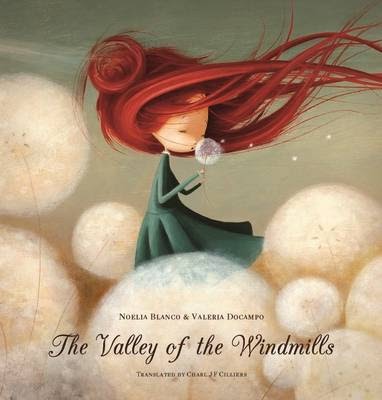
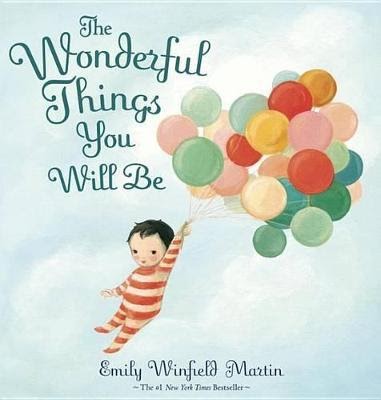

Illustration Copyright: Valeria Docampo Copyright: Emily Winfield Martin Illustration Copyright: Seng Soun Ratanavanh
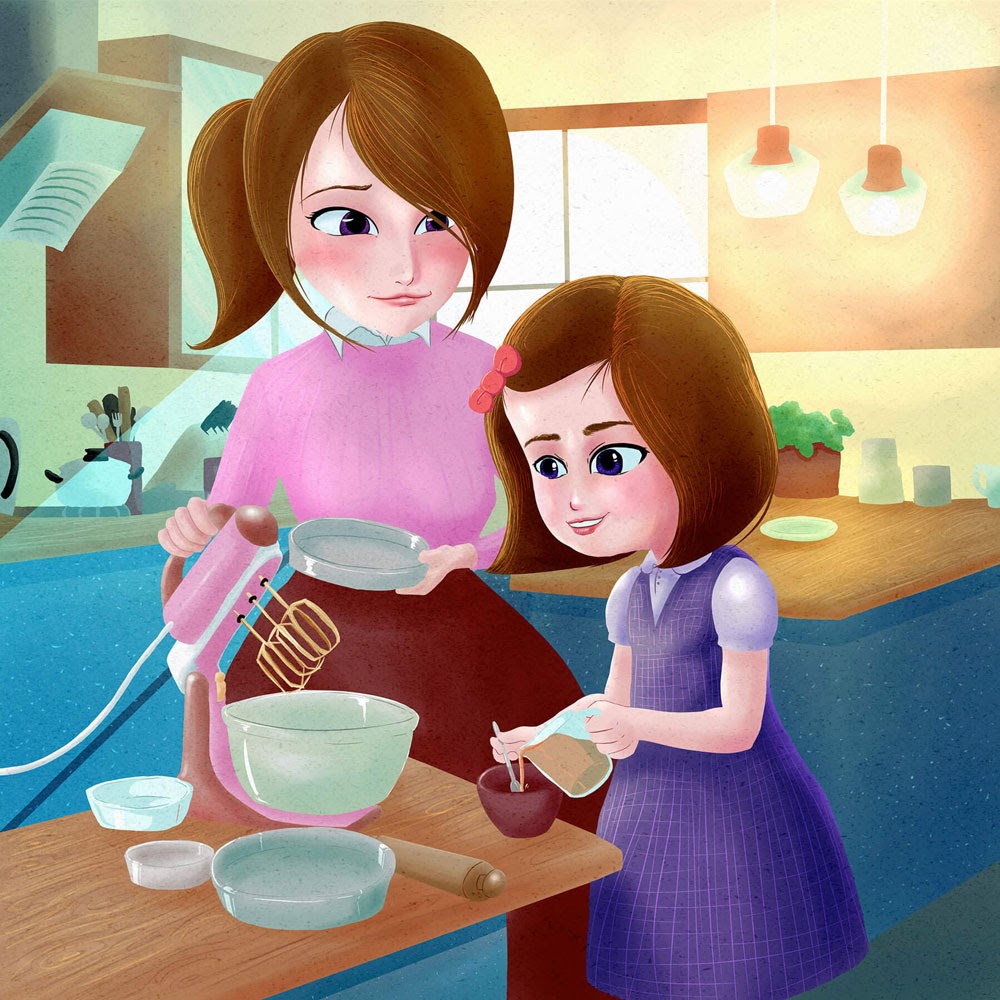
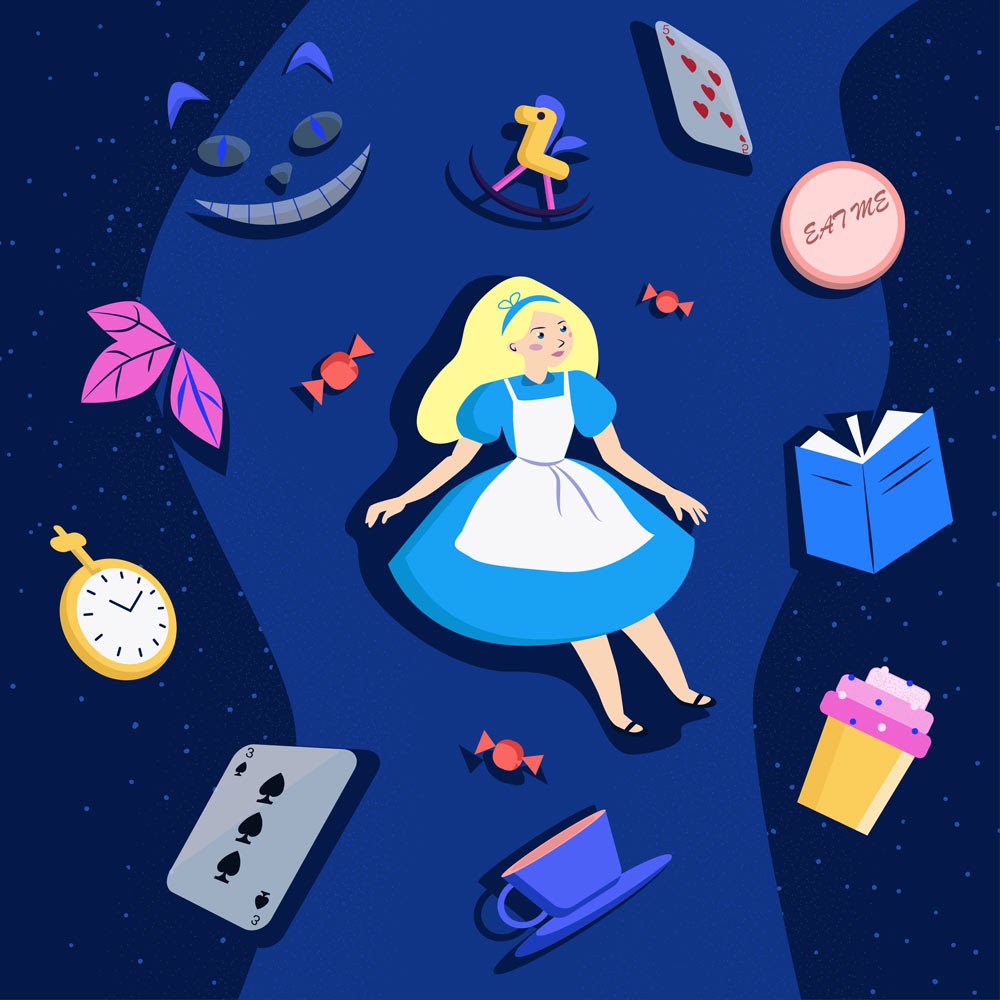
Illustration by GetYourBookIllustrations Illustration by GetYourBookIllustrations
Line drawings
Line drawings are outline drawings that aren’t colored and have no gradation (no different colors or grey-scale). It’s (normally) drawn in one color and only uses lines.
These can also be used for coloring books.
Examples:
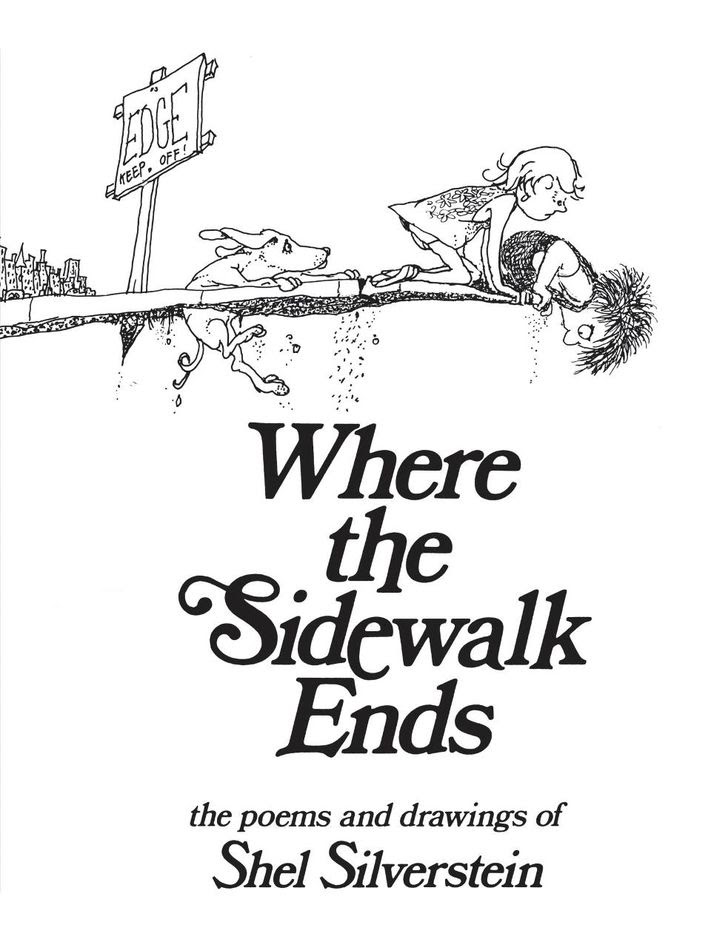


Copyright Evil Eye, LLC Copyright Marti Whiting-Pearson Illustration copyright: Denise Brunkus Illustration by GetYourBookIllustrations From Junie B Jones and the Stupid Smelly Bus
Sketchy drawings
Sketchy drawings are drawings that are unrefined and still look more like rough sketches than final illustrations. They can vary in their refinement and be rough, or hardly rough at all. Often they don’t have color. Sketchy drawings are often expressive, which can be a nice touch.
Examples:

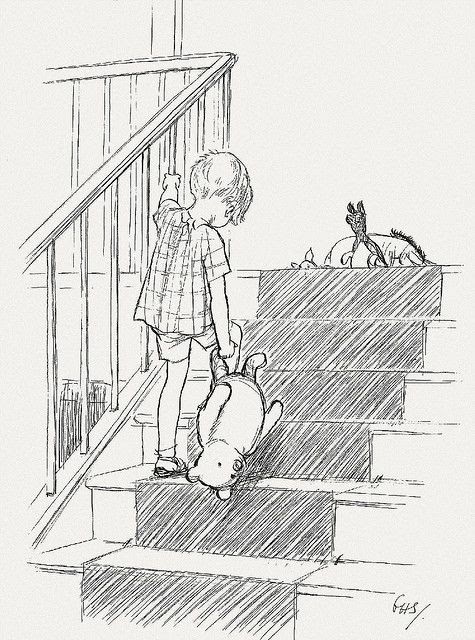
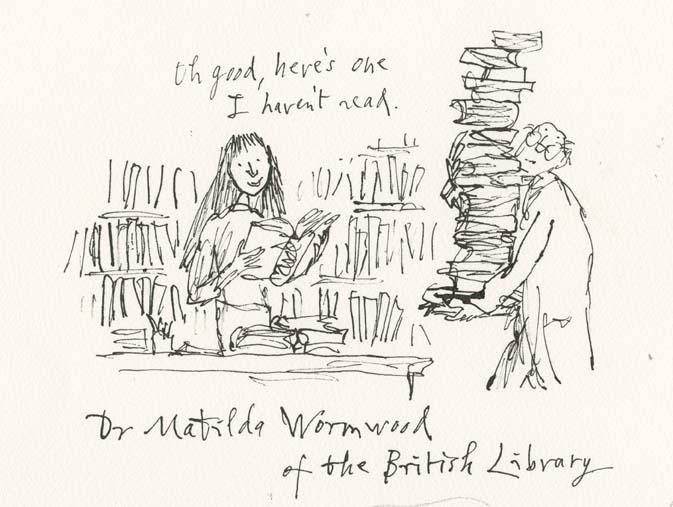
Copyright: Amber Layne Nieves Copyright Disney Illustration Copyright Quentin Blake
From Winnie the Pooh From Matida at 30
Stylized
Stylized illustrations are not realistic and don’t have natural, conventional forms. They are often simplified, or made up of geometric shapes or patterns. They also often have flat colors.
Examples:
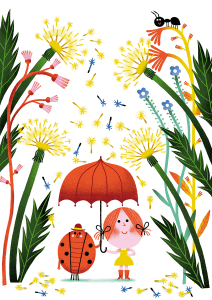
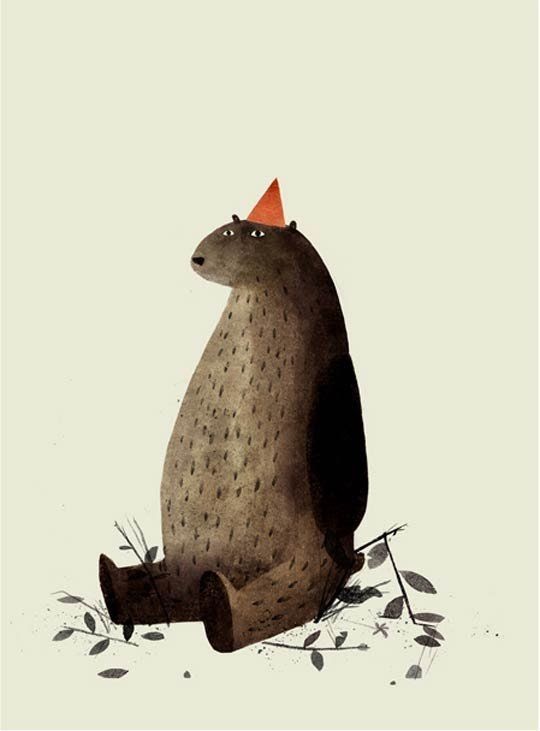
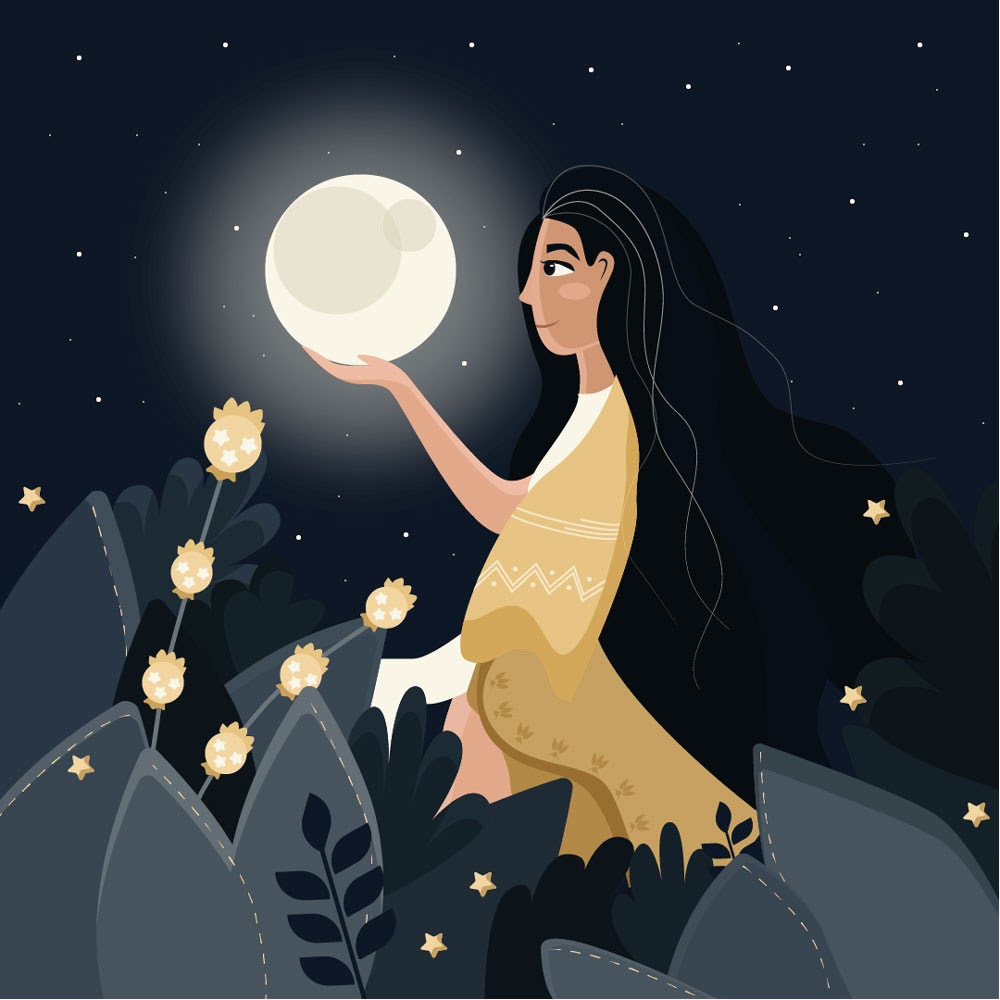
Illustration Copyright: Amélie Falière Copyright: Jon Klassen Illustration by GetYourBookIllustrations
#2 Medium
Though they’re not the same thing, style and medium are often used interchangeably or overlap. This is understandable, since the medium influences the appearance.
For instance, watercolor is seen as a style. Though, in the stricter sense of the word, it is a medium. While it has a distinct quality, you can create different styles of illustrations with watercolor. Here are four watercolor birds to show what I mean:

The following media are used for children’s books:
- Watercolor
- Acrylic
- Gouache
- Pencil
- Charcoal
- Ink or pen
- Wood cutting (not common anymore)
- Metal etchings (not common anymore)
- Lithography
- Collage
- Multimedia
Then, these last two are a slightly different category, but we can divide digital illustrations as follows:
- Freehand digital illustrations
- Stylized digital illustrations
Watercolor
Watercolor is a painting method with water-based paint. Use more watery paint, and you get more transparent, softer images. These illustrations are mostly whimsical, delicate, gentle or sentimental. Less watery paint makes for sharper, brighter images.
Beatrix Potter’s preferred medium was watercolor: http://www.artnet.com/artists/beatrix-potter/
On this page there are two more modern, beautiful examples of watercolor illustrations: The Three Questions and Blowin’ in the Wind.
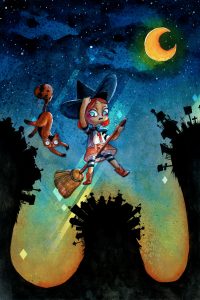
Illustration by GetYourBookIllustrations
Acrylic
Acrylic paint is a fast-drying paint and can also be used watery or thicker than watercolor, making for more opaque colours and texture.
Goodnight Moon has acrylic illustrations: http://reviews-of-childrens-literature.pbworks.com/w/page/10581693/Goodnight%20Moon
Jennifer O’Connel’s preferred medium is also acrylic. http://www.jenniferoconnellart.com/portfolio
Gouache
Gouache is another type of paint and can again be mixed with water to change the consistency. It can be used dry, for what is called a dry brush effect that is textured. Here is an example by Ana Roque Sá:
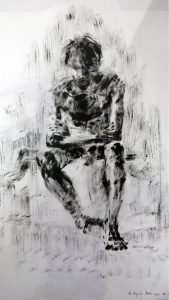
It can be used at “normal” or medium consistency, as illustrator Mary Blair does, for a result like this:
https://www.wbur.org/artery/2016/02/15/mary-blair
Or it can be made watery and is then similar to watercolor, like this: https://www.artistsnetwork.com/art-subjects/animals/dina-brodsky-bird-paintings/
Here you can see a couple of interesting comparisons between gouache and watercolor: https://www.artistsnetwork.com/art-mediums/watercolor-wonder-watercolor-vs-gouache/
Pencil
There are graphite (greyscale) pencil drawings or color pencil drawings.
I Miss My Grandpa and The Gift Falls off by Jin Xiaojing are examples of color pencil drawings.
So is the work of Raymond Briggs, for instance The Snowman: Raymond Briggs Receives Lifetime Achievement Award – News
Adonna Khare is a great graphite pencil artist: https://www.artsy.net/artist/adonna-khare
Charcoal
Soonchild by Russell Hoban, illustrated by Alexis Deacon, is an example of charcoal illustrations. https://theaoi.com/2014/12/11/soonchild-book-review/
Olivia the Pig has mainly charcoal drawings, with splashes of red added in. You can see a couple of the illustrations here: https://www.scholastic.com/parents/books-and-reading/raise-a-reader-blog/olivia-book-high-energy-kids.html
Ink or Pen
Shel Silverstein’s books are famous examples of pen-and-ink illustrations: Shel’s Books
John Tenniel also illustrated Alice in Wonderland in pen and ink.
Wood Cutting
Wood cutting is a technique of cutting an image into wood and then using this to print.
Edmund Evans did the illustrations from The House that Jack Built by wood cutting.
There are more examples here: Book illustration: the woodcut
This method is uncommon today and would require a big budget for your illustrations. I’ve included it as artists mimic this style with drawing (not actual wood cutting). So if you like this style, you could get a similar look for your illustrations.
Illustrations from The House that Jack Built
Credit: https://digital.collections.slsa.sa.gov.au/nodes/view/2201
Metal Etchings
Metal etching was the most common form of creating book illustrations from the late 1500s to the early 1800s. It can achieve detail wood cutting cannot. There are different types of metal etching, but in brief it entails producing images on metal plates, which are then used for printing.
As with wood cutting, metal etchings are now uncommon and expensive, but illustrators can imitate it with ink or digitally. You can see traditional examples here: https://universityofglasgowlibrary.wordpress.com/2012/08/28/book-illustration-engraving-and-etching/
A modern take may look like this:
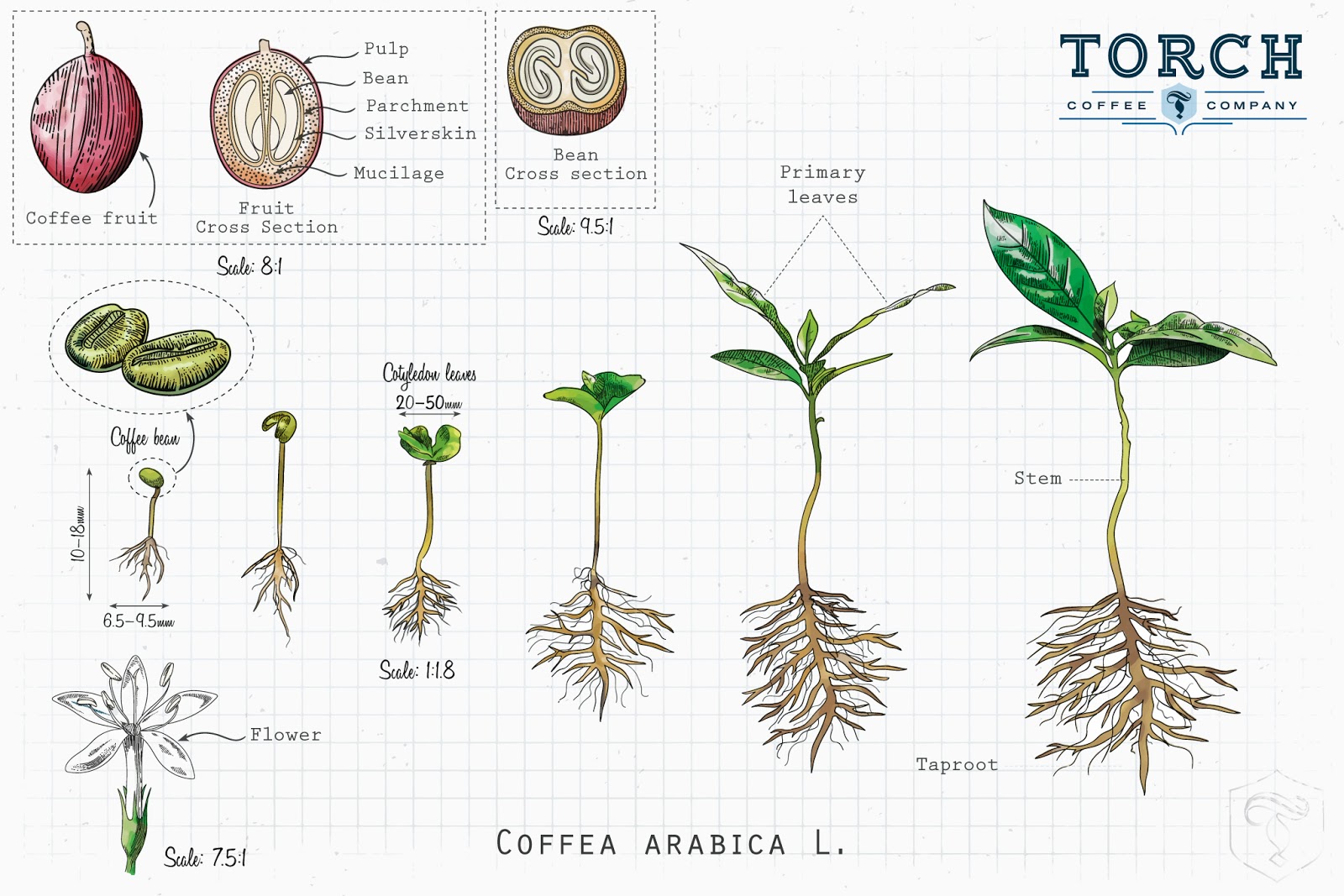
Click to enlarge
Illustration by GetYourBookIllustrations
Lithography
Lithography is another printing process. A flat surface is treated with oil in areas to create an image. The oil repels ink and thus an image is created by the ink only sticking to the desired areas, which are then printed. Different colors can also be created in one image by doing multiple prints, one color at a time.
While not as common as most other media in this list, lithography is still in use.
The Terrible Troll-Bird is a good example of lithography.
Collage
Collage is made by attaching different materials such as cut or torn paper, photographs or fabric onto paper or a backing.
Eric Carle, author of the famous The Very Hungry Caterpillar, did all his book illustrations in collage. He painted tissue paper with acrylic for his collages. You can see examples here: Eric Carle | Carle Museum
Mixed media
This is a combination of different media. Mixed media is common in children’s book illustrations. Examples include watercolor and pencil; or ink, charcoal and any kind of paint combined.
Here are examples where children’s book illustrator Isabelle Arsenault used gouache, pencil and watercolor together.
Digital—Freehand
These illustrations are created digitally, in various kinds of software. Freehand digital art is drawn as one would draw on paper. Thus the shapes and lines are organic (not perfect geometry, exact straight lines etc.). There is also often shading.
There are sub-categories in this medium, but I’ll only mention freehand raster and freehand vector illustrations. Raster illustrations means the images are drawn in pixels (tiny dots on that make up the images on a computer screen). These drawings tend to have more natural shading, more organic and “imperfect” lines and look more like traditional art.
With vector illustrations the information is stored as mathematical statements. For our purposes, all that matters is the appearance. Vector illustrations often have more “perfect”, smooth lines and shapes (e.g. perfect circles), flatter colors and hard/crisp edges to the shading (instead of soft, blurry-edged shading).
As digital illustrations software has advanced, there are more and more ways to make raster resemble vector and vector like raster illustrations. But no need to get too technical in this article.
This is a broad category, and these illustrations can be extremely varied.
Here are a few examples from the GetYourBookIllustrations portfolio of freehand raster digital illustrations:
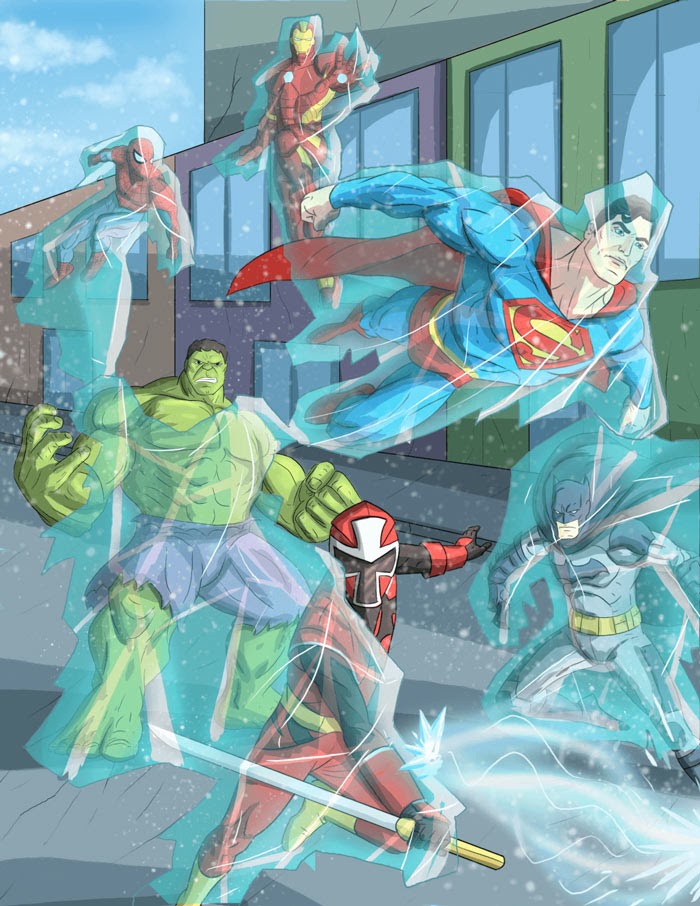
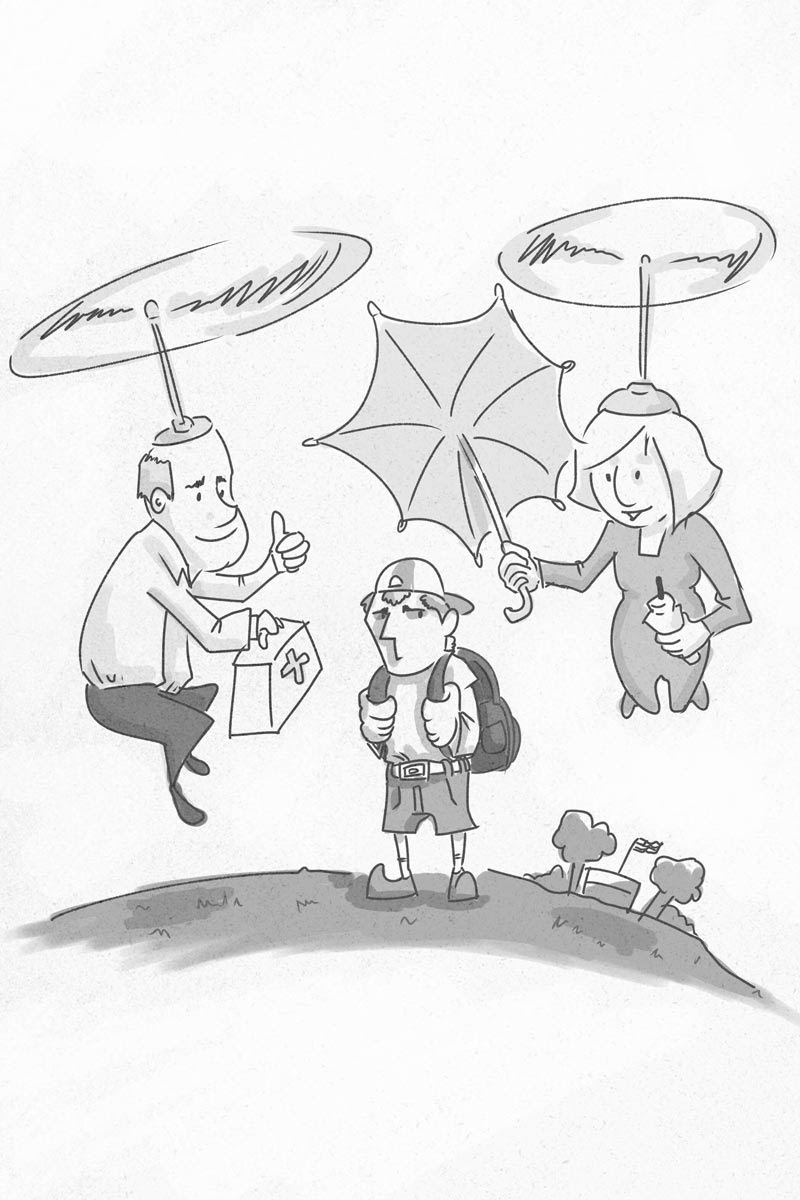

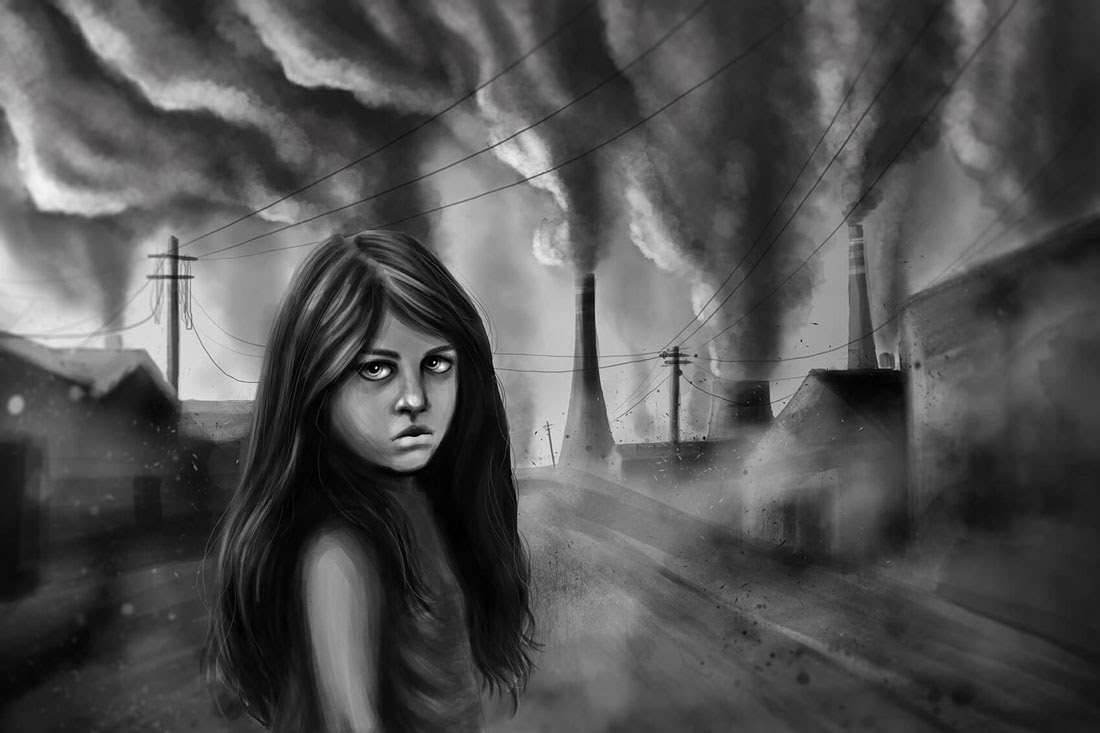
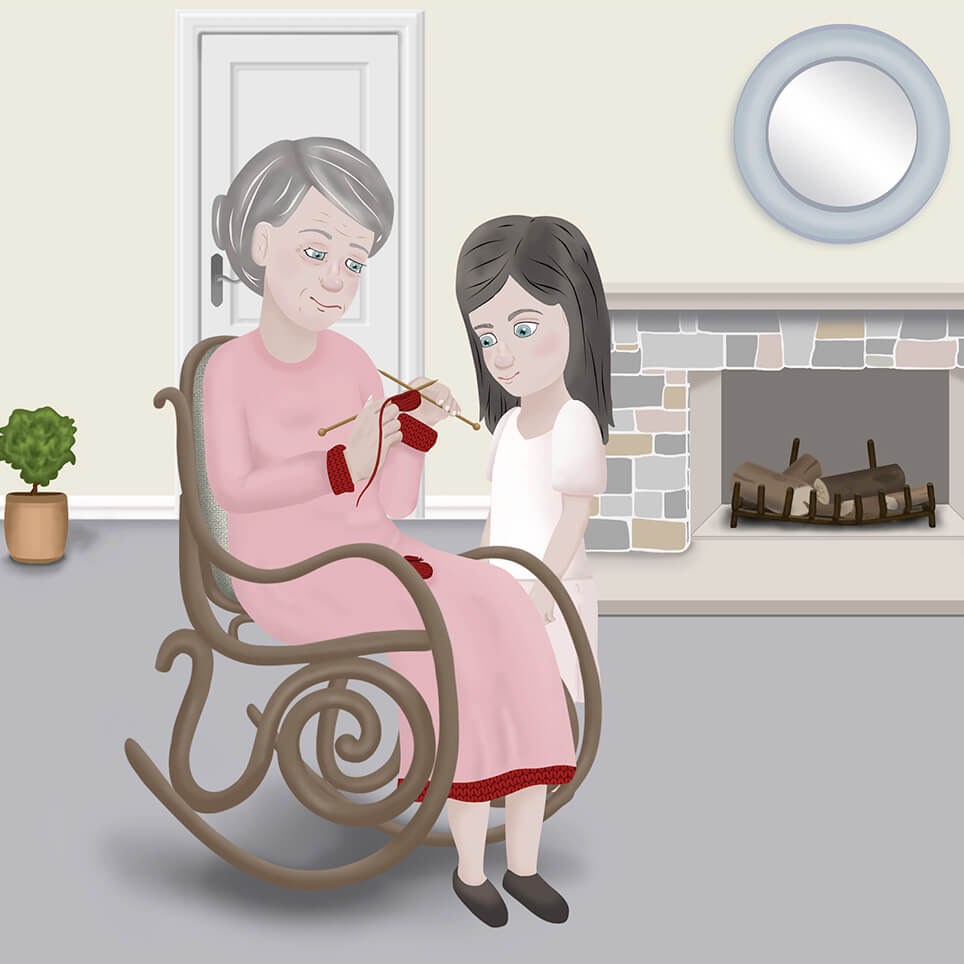
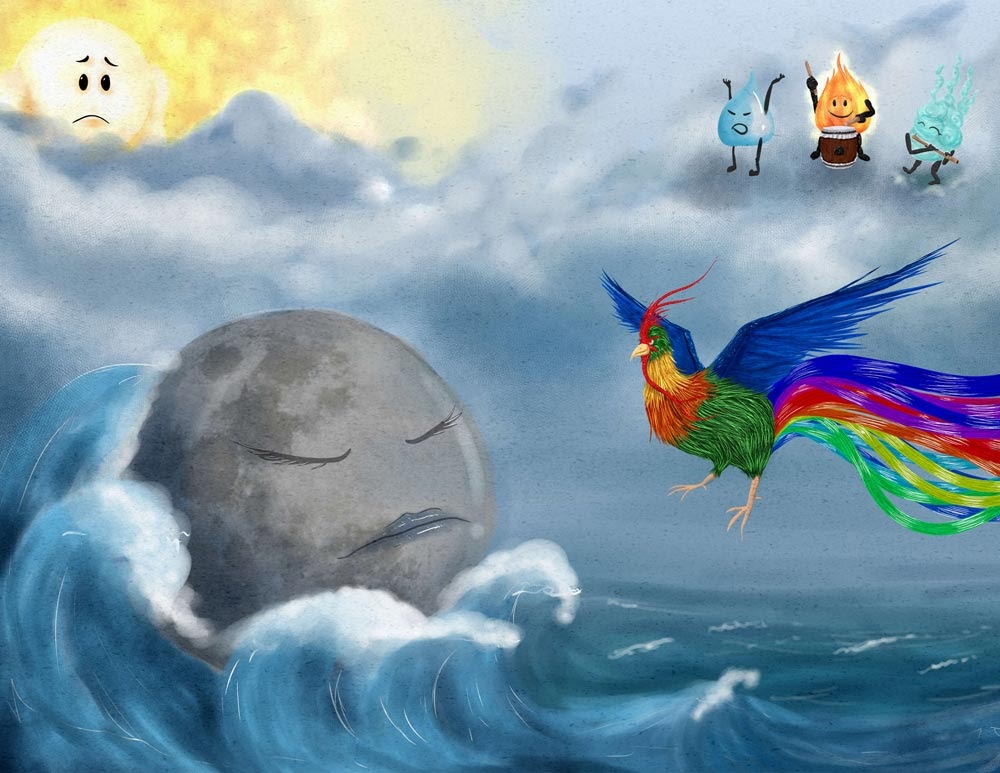
And here are a few examples from the GetYourBookIllustrations portfolio of freehand vector digital illustrations:
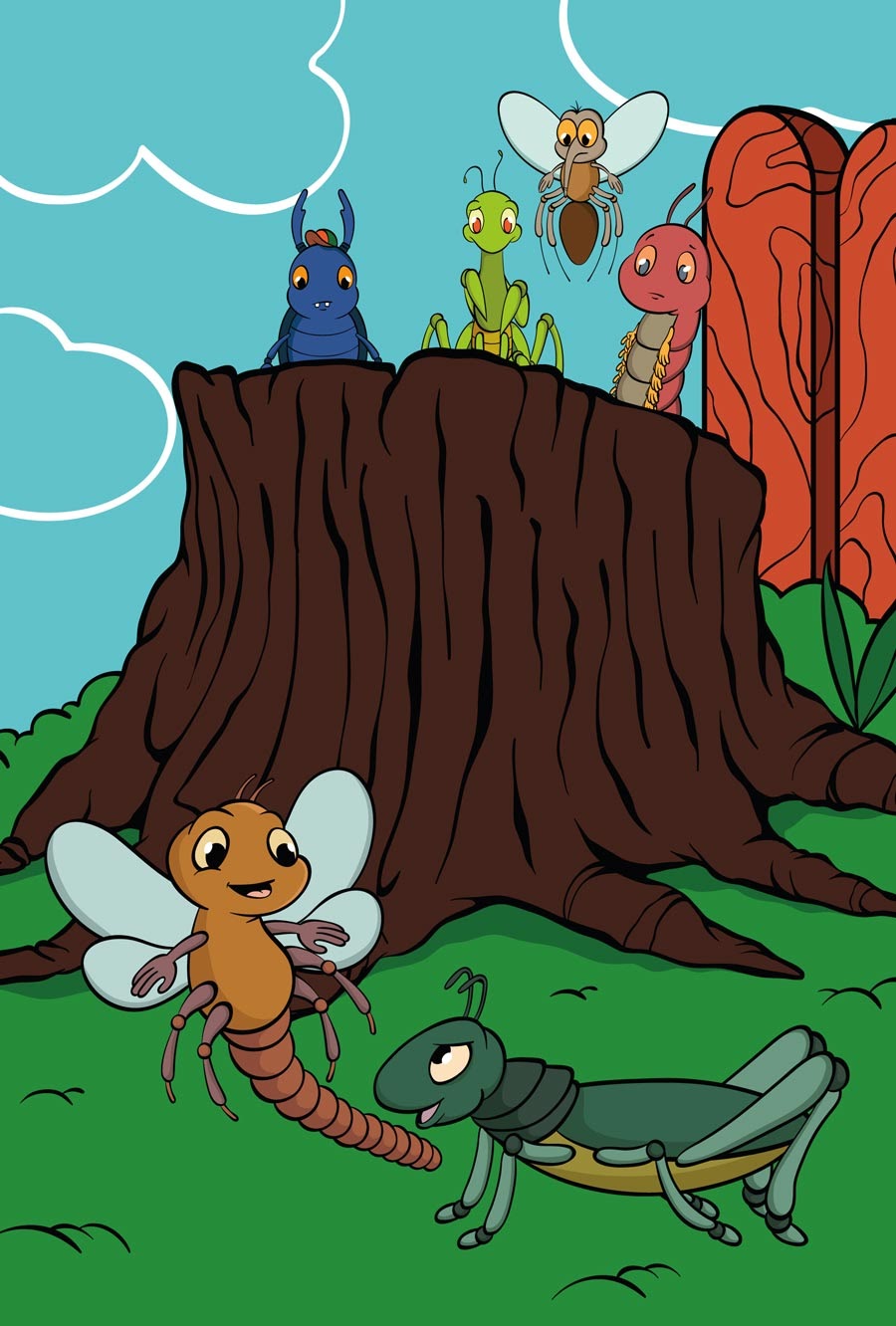

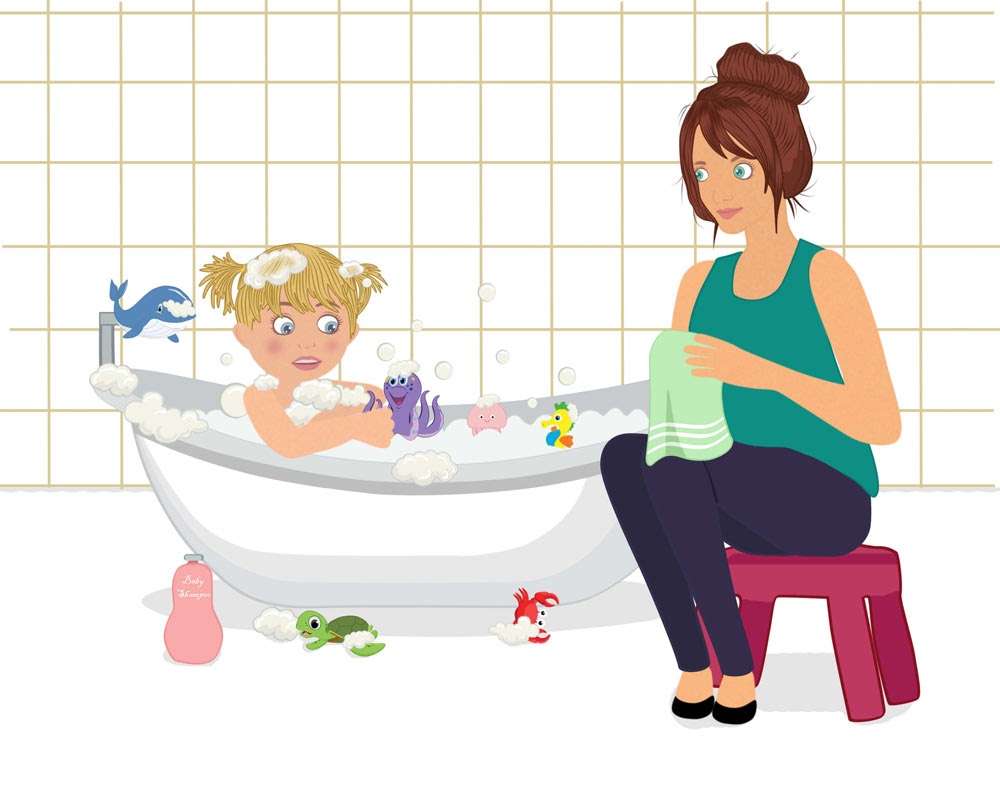
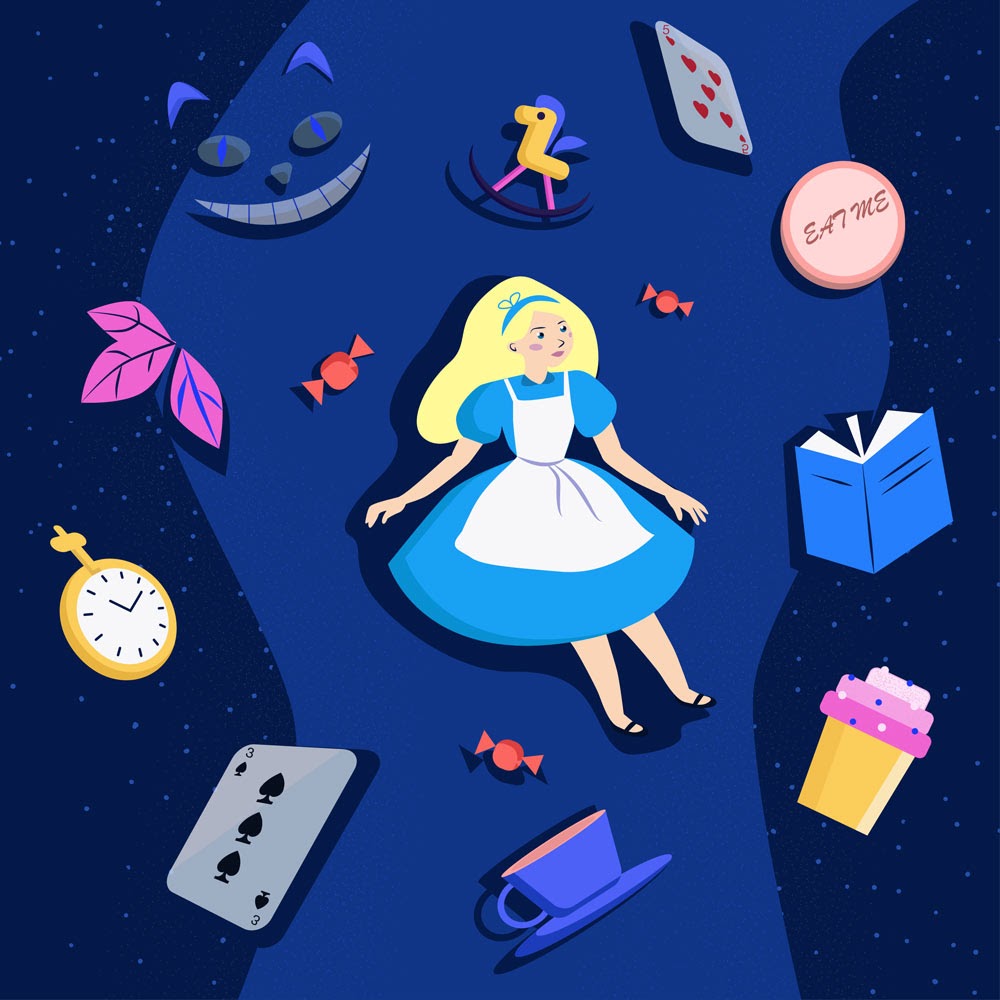

Digital–Stylized
As with traditional illustrations, stylized digital illustrations don’t have natural, conventional forms and are often simplified or made up of geometric shapes or patterns.
Here are a few examples from the GetYourBookIllustrations portfolio of stylized digital illustrations:
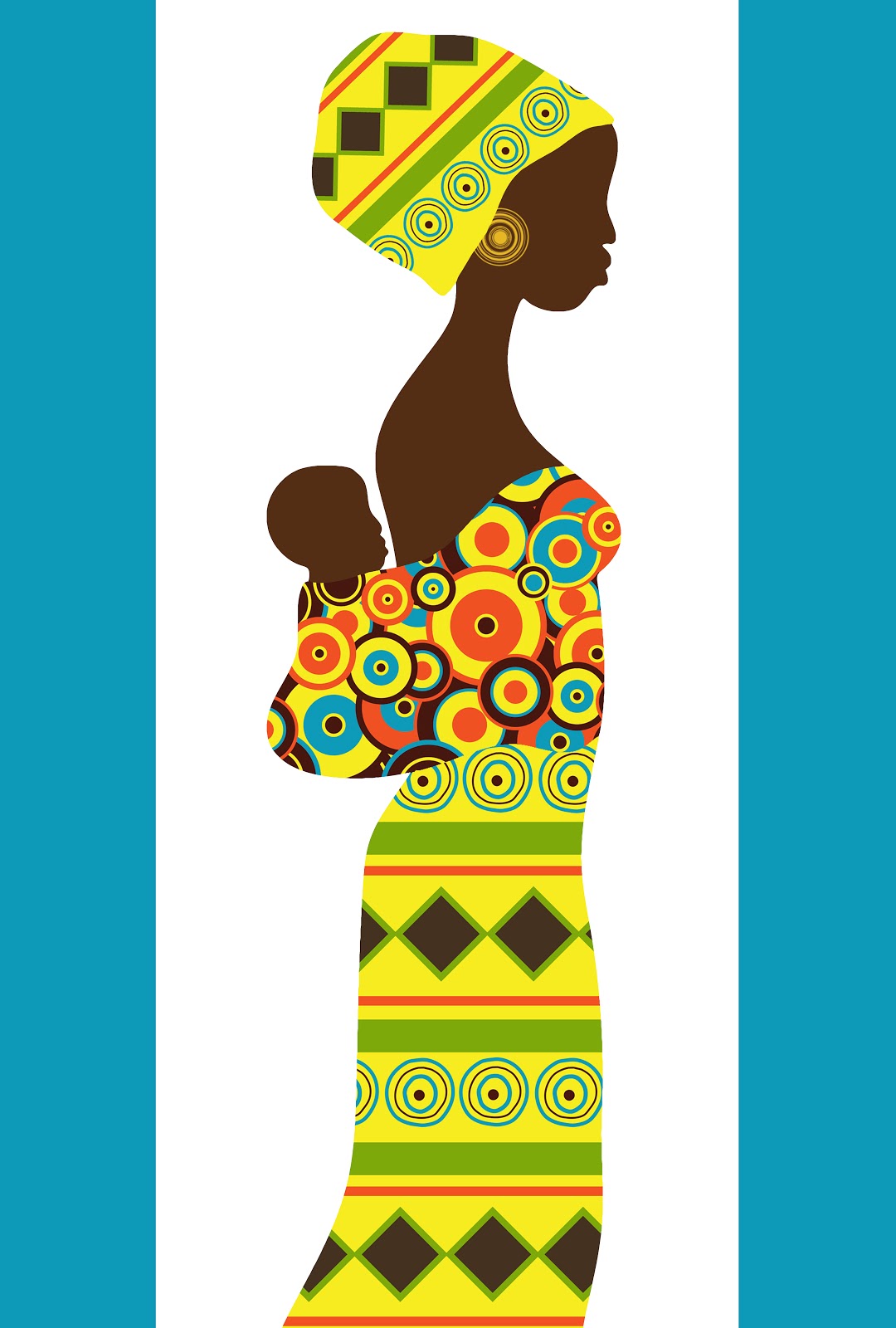

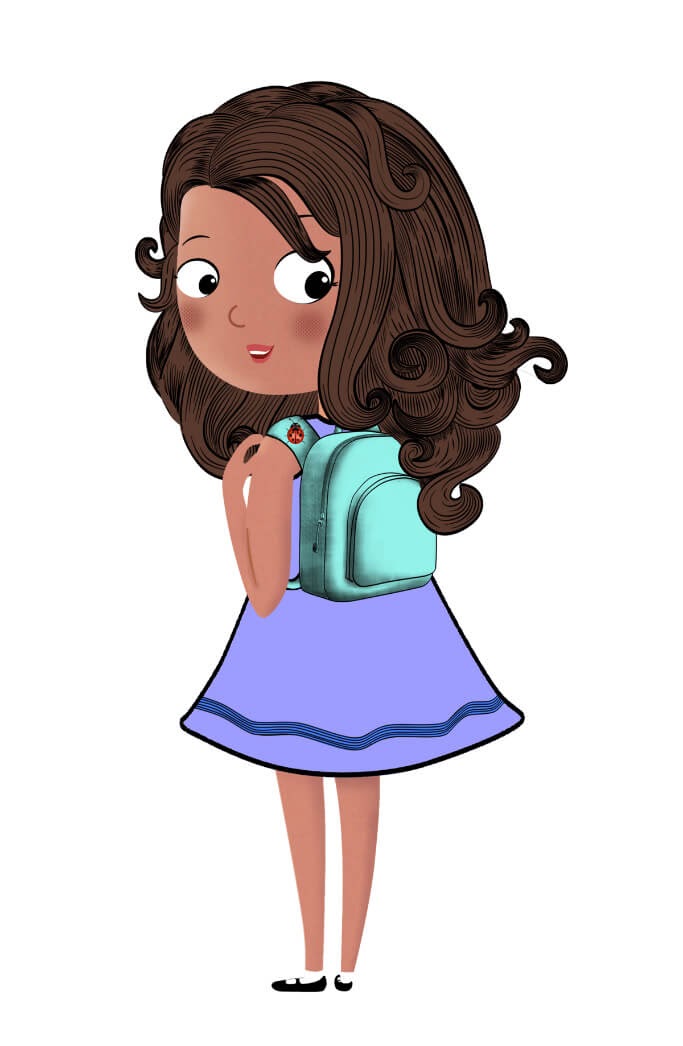
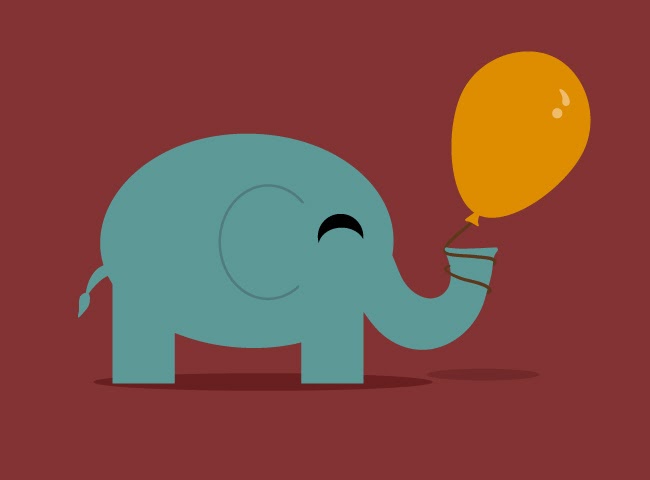
What types of illustrations for children’s books are there? Now you know!
There is more I could say on the subject, but this gives you a pretty comprehensive overview of the types of illustrations you can choose from.
In short, the best way to choose the illustration style for your book is by combining your personal preference with doing research on what fits for your age group and genre. And the best way to do that is to look at many children’s books!
Is there anything in particular about this subject you’d like to know more about? Then please let me know in the comments below so I can address your questions.
At GetYourBookIllustrations it is our mission to provide beautiful, affordable illustrations to help you bring your book to life! If you’d like to chat, book a call here.
Or if you’re ready to go ahead with your book, fill in our form to get started.
I’d love to read your comments!
- Which illustration style(s) do you think you would like for your book?
- Did I leave any important styles or media out?
FREE Webinar: How To Write A Picture Book Without Self-Doubt Or Procrastination, Even If You’ve Always Struggled To Turn Your Idea Into A Story.

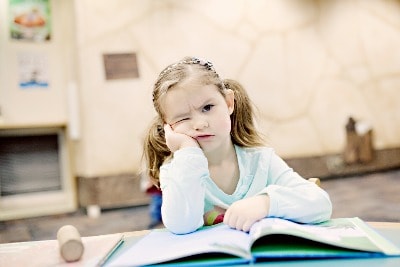
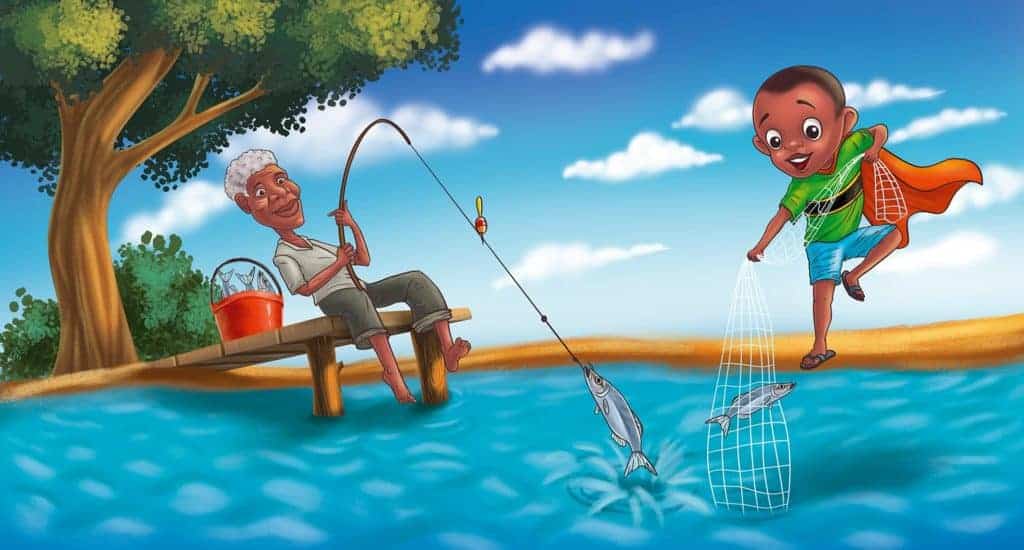
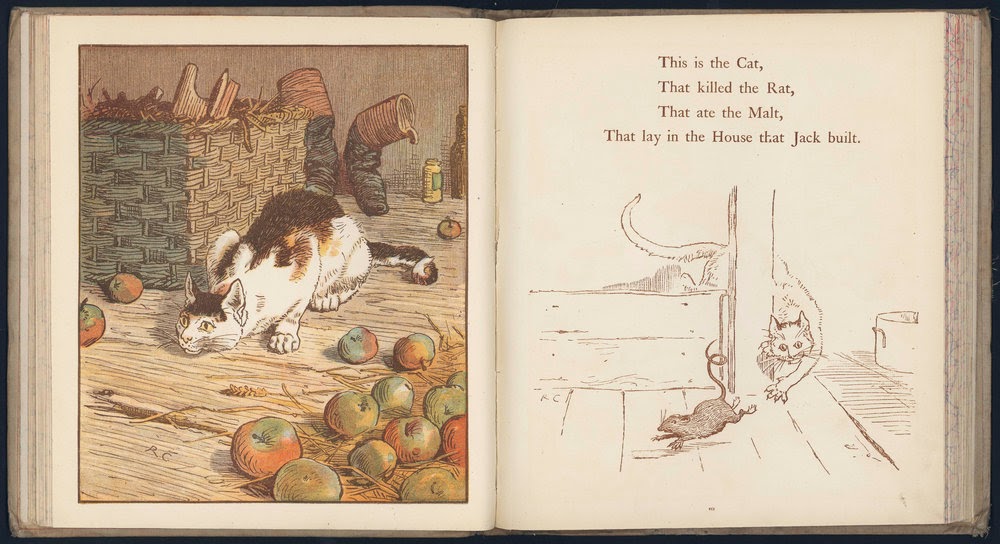

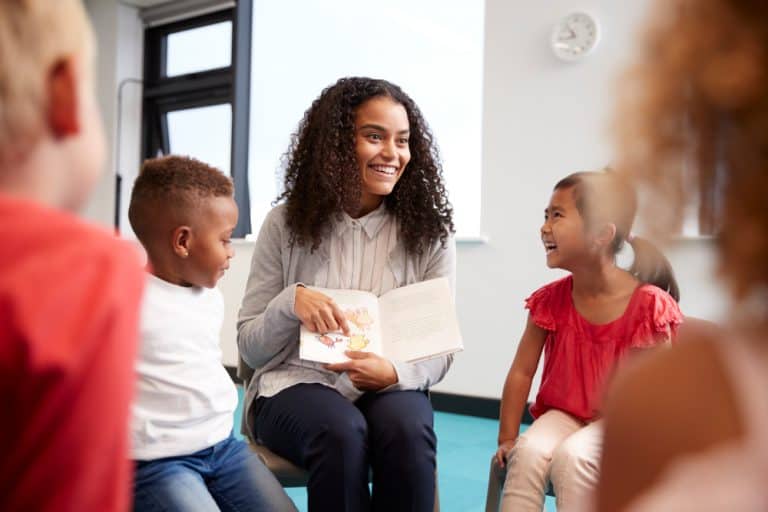




I have a question…
If I were to hire Get Your Book Illustrations to illustrate my book, how would the illustrator be noted on the cover and title page, with the illustrator’s name or with GYBI?
Hi Paul, we normally leave that up to the author. Once the illustrations are done you own the full rights to them, so you can choose if you want to credit GetYourBookIllustrations or the illustrator.
I am Thabo Kheswa in South Africa at Gauteng province. So I wrote short story I needed to be illustrated what can I do. Please let me leave my email address to respond. [email protected]
Call 073 8233027
Hi Thabo 🙂
Thank you for reaching out. We would love to see if we can help. Could you book a free consultation call here:
https://getyourbookillustrations.com/self-publishing-author-consultation/
Looking forward to hearing back from you!
Best Regards,
A`sea
Such great info! Thank you for compiling this. It’s going to be so useful!
Wonderful, Kate! I’m glad it will help you 🙂
So many different beautiful options! Thank you for sharing all of this wonderful information. I love the look of watercolor and wonder if a digital watercolor would provide the same feel? My stories have some hard edges so I think the softness watercolor might provide would help carry the story.
Hi Donna! Digital art can create a watercolour look, yes. You’d need an illustrator that is able to achieve that particular look, but it’s definitely doable.
This information was extremely informative, Karen, and I appreciate these free tips for beginning writers. Many thanks.
I’m glad you enjoyed it and found it helpful, Regina!
Thank you, this is really useful article.
I was wondering if I decide to do my own illustrations for my children picture book, and I’ve got some elements for my illustrations from web sites like http://www.freepik.com, can I put my name as this book illustrator on its cover, really I don’t know?! So I need your opinion as professional illustrators if you may.
Hi Nisreen. I wouldn’t put your name as illustrator, as you didn’t draw the illustrations. You have to draw them to be the illustrator. What you can do is either leave “Illustrated by” out completely. That’s fine. Or you can credit freepik. Please do make sure the illustrations you use are paid for, or are allowed to be used in a book. They also have rules about crediting illustrators on their site. Good luck!
Great read, very interesting and beautiful illustrations that adds life to any text. Thank you
Thanks, Debra! I’m glad you enjoyed it.
Great article. What book is the the main picture from (grandmother and boy fishing)?
This is Coni Knepper’s Little Dude and his Shagalabagala Day. We just finished illustrating it. It’s a very cute story! If you like, you can get it from her site, coniknepper.com.
What is the illustration style of the Little Dude?
Hi Vanessa! This is digital art done by one of our illustrators in Photoshop. It’s a cartoon style.
Hi Karen,
I am author but I’d really like to explore illustration for my own children’s books. How would you recommend that I get started?
Hi Mpho. Without all the information on your skill level and background as an artist, that’s quite hard to answer. In truth, unless you are a skilled artist, I’d advise not illustrating your own books. If you are a skilled artist, though, I’d recommend two things: 1. Read/look at MANY children’s books for the same age group as the ones you want to create. Pay attention to how the illustrations flow, the characters, their body language, facial expressions, colours, etc. 2. Learn the technical requirements for book illustrations. Even if you can draw well, there other considerations to keep in mind when illustrating for books. I’ve made a course exactly about this, if you’d be interested. It’s here: https://courses.childrensbookmastery.com/how-to-create-print-and-ebook-ready-illustrations-page/
Muchas gracias. ?Como puedo iniciar sesion?
Ola! We don’t speak Spanish, but you can book here: https://getyourbookillustrations.com/self-publishing-author-consultation/
Lithography comes from the Greek word for stone. Originally, the technique used an image drawn with oil, fat, or wax onto the surface of a smooth, level lithographic limestone plate. Today, most types of high-volume books and magazines, especially when illustrated in color, are printed with offset lithography, which has become the most common form of printing technology since the 19. You can read more about the technique in Wikipedia s article dedicated to the topic.
Thanks for the input, Nilah.
As a reviewer of Children’s books this was very helpful in giving me some understanding of the different illustration styles. Thank you for posting.
Wonderful, Veronica. I’m glad it was helpful!
Fantastic article ! You havemade some very astute statements and I appreciate the the effort you have put into your writing. Its clear that you know what you are writing about. I am excited to read more of your sites content.
Thanks so much for the kind words! I hope you get just as much value from the other articles.
I would like to thank you for the endeavors you have made in writing this piece of writing. I am trusting the same best work from you in the future as well. In fact your creative writing abilities has inspired me to start my own blog now. Actually the blogging is spreading its wings rapidly. Your write up is a fine representative of it.
Thank you! Much appreciated and good luck with your ventures.
I agree with you
Really good post. I learn something mroe challenging on different blogs everyday. It is recommended stimulating to enjoy a book content from other writers and become familiar with a little something from their store. I want to apply certain of that content on my blog should you do not mind. Natually Ill give a link in to your internet site. Thanks for sharing.
Thank you for the kind words! You are more than welcome to share and put the link, that would be appreciated. And I’d love if you share your post with me on [email protected] so I can see too 🙂
Well I really enjoyed studying it. This information offered by you is very effective for good planning.
Great!
To the point and written well, thanks for the info
Thanks!
Can you email me with any tips about how you made your blog look this cool , Id be thankful!
Hi. We use WordPress, with Elementor, for our website, with Gutenberg for the blog.
Youre not going to believe this but I have wasted all day searching for some articles about this. I wish I knew of this site earlier, it was a good read and really helped me out. Have a good one
I’m glad you found the article and found it helpful!
Really interesting article! Very helpful as I am a beginning writer (and retired educator).
Wonderful! Good luck with the journey and feel free to book a call if you have questions we can help with.
Hello! Just wanted to say great blog. Keep up the good work!
Thanks!
Hello 🙂 Your method of describing the whole thing in this paragraph is genuinely fastidious, every one be able to simply be aware of it, Thanks a lot.
Thank you!
Have you thought about adding some relevant links to your article? I think it might enhance my understanding.
Hi. Maybe I am misunderstanding your question, but there are 22 links in this article to examples etc…
Great to be visiting your blog once more, it continues to be months for me. Nicely this write-up that ive been waited for so lengthy. I want this article to complete my assignment within the school, and it has same topic together with your article. Thanks, great share.
That is really fascinating, You are a very skilled blogger. I have joined your rss feed and stay up for in search of more of your magnificent post. Additionally, Ive shared your web site in my social networks!
Thank you! I am glad you found it helpful.
Really great content. This really very impressive. Keep sharing
Thank you!
Gracias muchache. Am learning to blog here in Panama city and this has been most useful for me.
Fantastic article! I’ll subscribe correct now wth my feedreader software package and my seotons!
I wanted to thank you for this great read!! I definitely enjoying every little bit of it I have you bookmarked to check out new stuff you post.
The article has really peaks my interest. I am going to like your site and preserve checking for brand spanking new information from feed RSS :-).
Reading your article is a big help, thank you so much for the share.
This is so detailed and helpful. I particularly appreciate the many examples of style and media you included.
Thank you so much!
I have learnt a lot from this article. Thank You.
Thank you Atta! You are very welcome.
There’s something to be thankful for in each book, yet now and again you simply need to search for it.
your blog design is beautiful. can i share this article?
Thanks! You may share it with a proper credit and link to this page.
quite insightful.
Thank you for this very informative article. I had no idea that there were that many options as far as illustrations were concerned. It surely gave me a lot to think about and decide on.